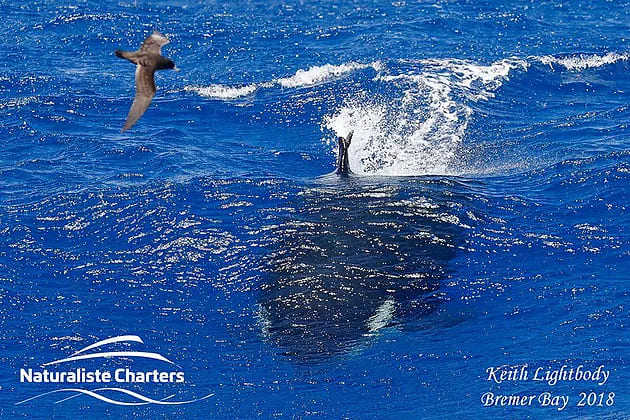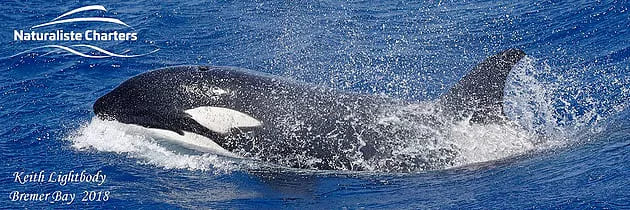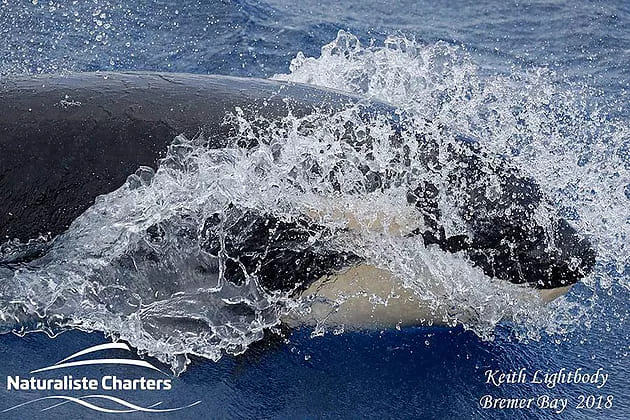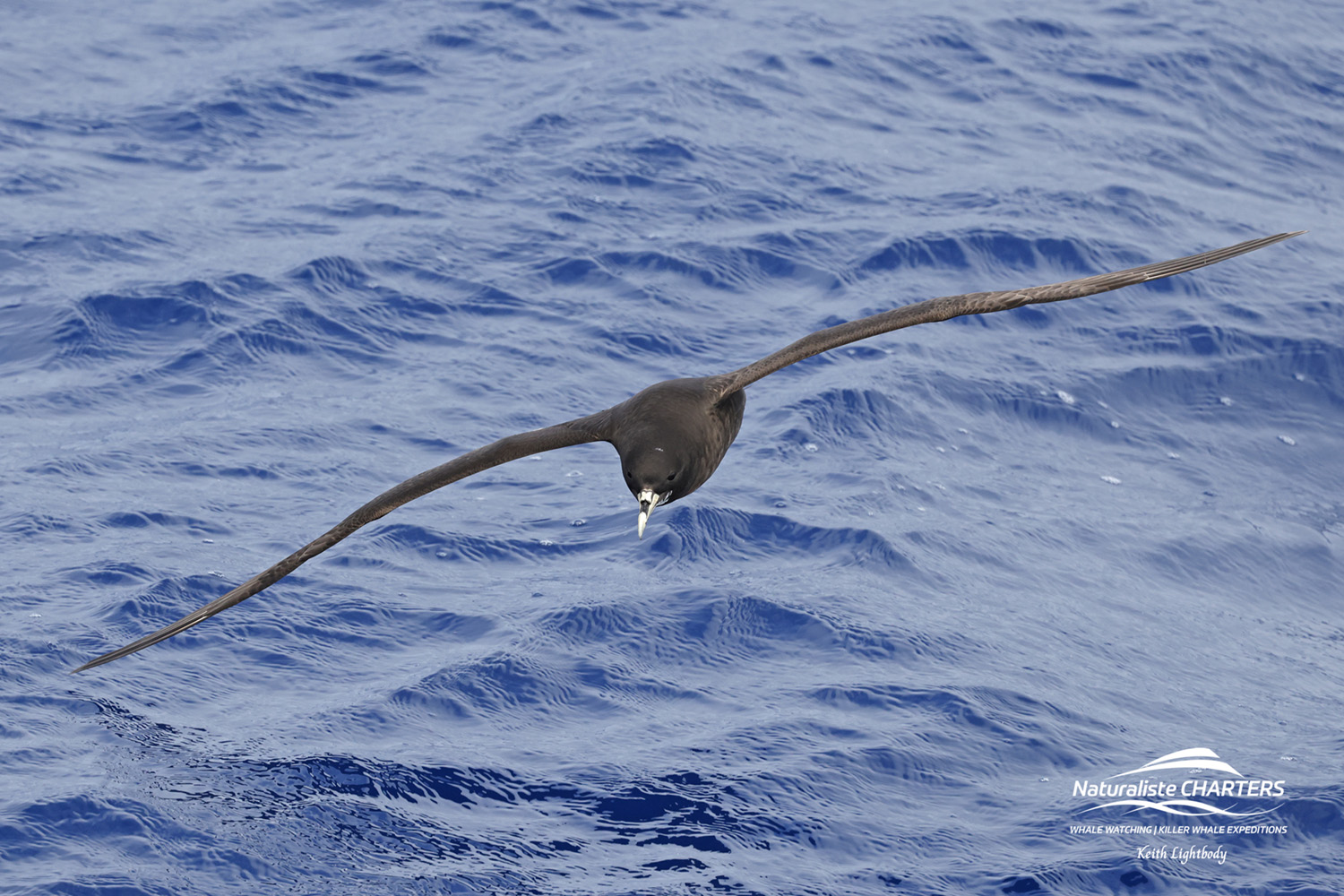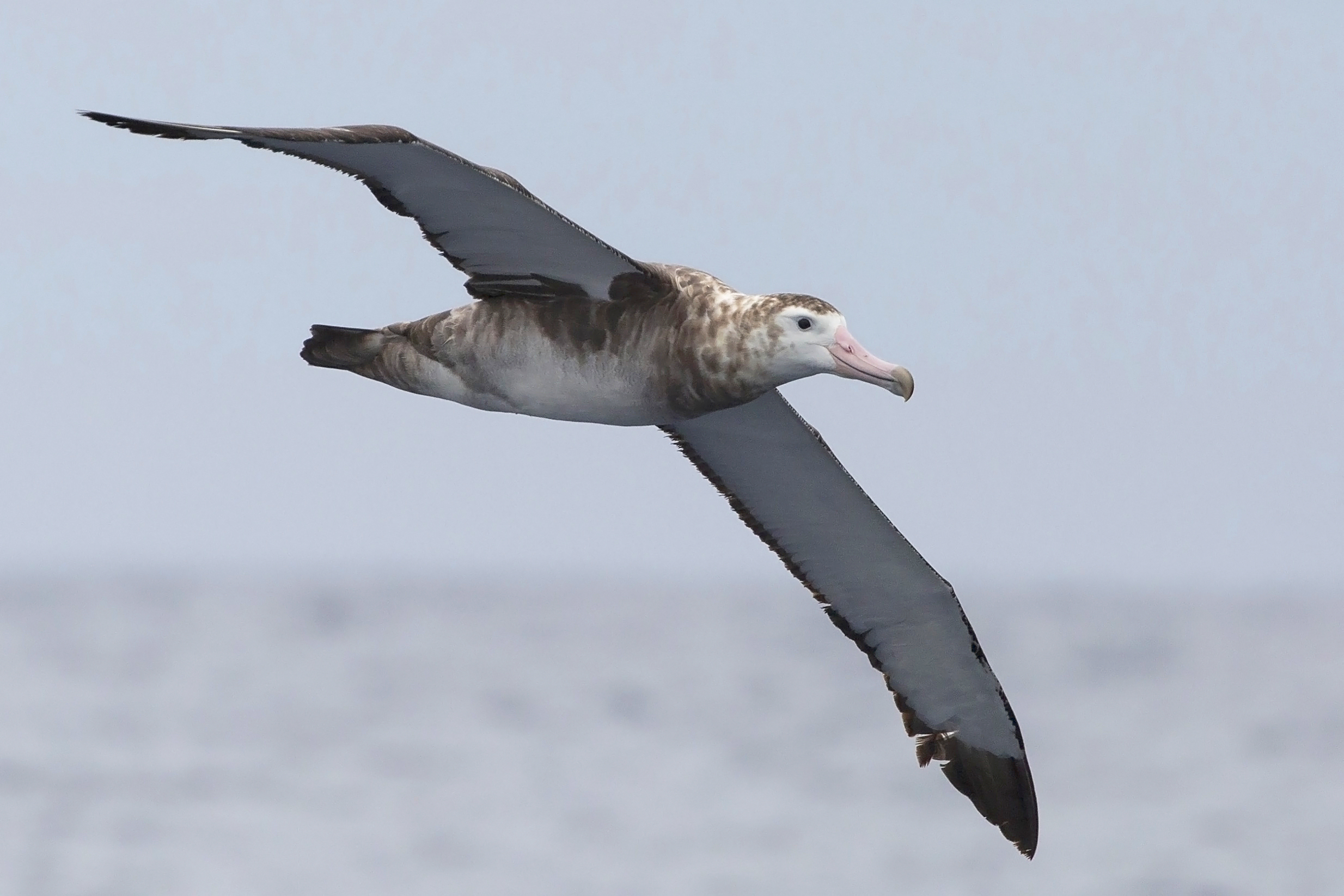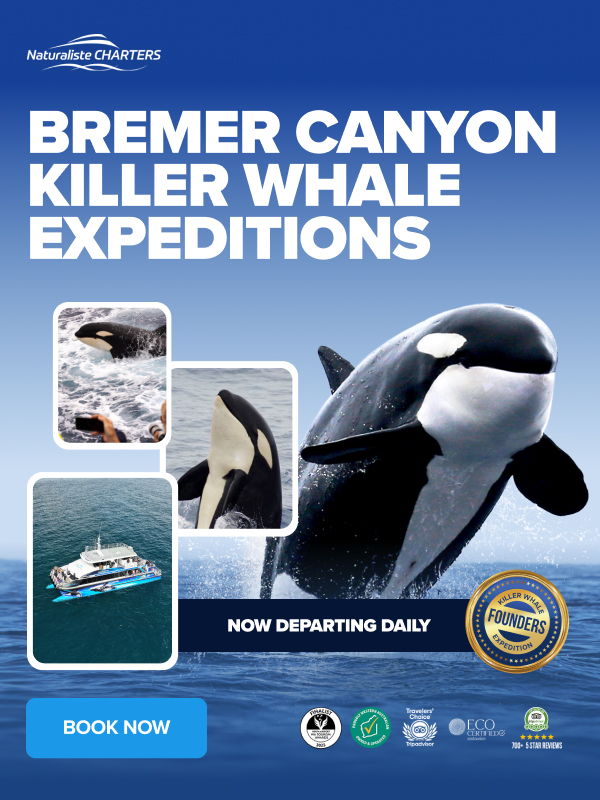Orca Tail Slapping: Split Tip Leads the Charge
It was a swell day in the canyon, and orca tail slapping was a defining spectacle from start to finish. Dropping off the shelf, oil slicks appeared almost immediately, so we tracked towards them. Orcas tend to be more active near the surface on rougher days, and the swell worked in our favour. Before long, we spotted Split Tip’s pod. She surfaced confidently off the port side, and within moments, the pod began moving beneath the vessel. Their movement was fluid and deliberate, crisscrossing from port to starboard and back again. Passengers quickly moved side to side as excited calls rang out. The orcas circled us in a curious, almost investigative pattern—clearly aware of our presence. It was an incredible way to begin the encounter. Behaviour like this highlights their intelligence and social coordination, with their interactions offering insight into the rich complexity of orca communication and familiarity with vessels like ours.
Join a Bremer Canyon Killer Whale Expedition with Naturaliste Charters to see these interactions for yourself.
Split Tip Surprises the Bow: Classic Inquisitive Behaviour
Just as we thought they had slipped away, Split Tip surfaced again—this time directly in front of the bow, startling everyone aboard. She was less than 20 metres away, showing off her typical inquisitive nature. Orcas can hold their breath for over 15 minutes and travel up to 50km/h, making their surfacings delightfully unpredictable. They often cruise at 5 to 6km/h, but their burst speeds allow them to change location rapidly. These adaptations contribute to why they are such effective hunters. Split Tip is particularly known for close approaches and displaying unique behaviours around vessels. Over the seasons, she has regularly demonstrated curiosity, often appearing suddenly or interacting up close with passengers. Sightings like today highlight just how accustomed and aware these apex predators are of their surroundings. Split Tip continues to reinforce her reputation as one of the most recognised and charismatic orcas in Bremer Canyon.
Explore more sightings like this on the Naturaliste Charters blog archive.
Surface Slicks, Sharks, and Orca Tail Slapping Behaviour
Later in the journey, we noticed distant blows to the west—approximately 800 metres away. As we crept closer, we encountered another oil slick and a group of flesh-footed shearwaters overhead. The orcas had gone down again. As we scanned the horizon, someone shouted from the back deck—a Bronze Whaler shark had surfaced. Likely drawn by the oil and blood from a recent kill, it glided near the vessel. Then came the most dramatic moment: a sudden explosion of orca tail slapping. The pod surfaced again, and in a synchronised display, delivered four, five, even six powerful slaps across the water. These displays could signal dominance, disorient prey, or deter predators like sharks. Tail slapping is also believed to be a form of social communication within pods. This display of orca tail slapping was loud, visible, and emotionally stirring—classic canyon behaviour that defines the unique character of this wild and remote ecosystem.
Learn more about orca social signalling and hunting strategies from NOAA.
Orca Tail Slapping as Social and Hunting Communication
Orca tail slapping is not always aggressive. It is also a social tool used among pod members. In Bremer Canyon, researchers observe this behaviour frequently, particularly in areas rich with prey. Some believe tail slaps help coordinate group hunting by sending signals through the water. Others see them as ways to reinforce social bonds, similar to how dolphins engage in coordinated jumps. The effect of a powerful tail slap sends shockwaves through the surface. It can alert pod members, intimidate nearby fish or sharks, or act as a territorial display. Watching multiple individuals tail slap in unison was both rare and unforgettable. Every slap echoed across the swell and drew gasps from all onboard. These were not casual splashes, but purposeful and powerful strikes. If you want to experience this level of marine behaviour in the wild, there are few better places than Bremer Canyon during peak season.
Read about our tour options to plan your own canyon adventure.
Mobula Rays Wrap Up an Incredible Day
Just when we thought the day was winding down, two Mobula rays were seen cruising the surface. Related to manta rays, they are known for leaping high into the air—sometimes up to two metres. Scientists still debate why they do this. Possible reasons include attracting mates, shaking off parasites, or social signalling. Whatever the reason, it is thrilling to watch. These rays added a final surprise to an already rich day of wildlife. From Split Tip’s curious pass to coordinated orca tail slapping and shark sightings, it was a day full of raw ocean drama. Bremer Canyon never fails to deliver. With each trip, we are reminded how alive and powerful this part of the Southern Ocean remains—untamed, unpredictable, and unforgettable.
Want to learn more? Read about Mobula rays in Australian Geographic.
Until Tomorrow
Today was a perfect example of why the canyon is so special. Every day offers a new story—this one was full of tail slaps, surprises, and Split Tip’s charisma. We will be back out there tomorrow to see what else the ocean reveals.
Until tomorrow,
The Bremer Canyon Crew


